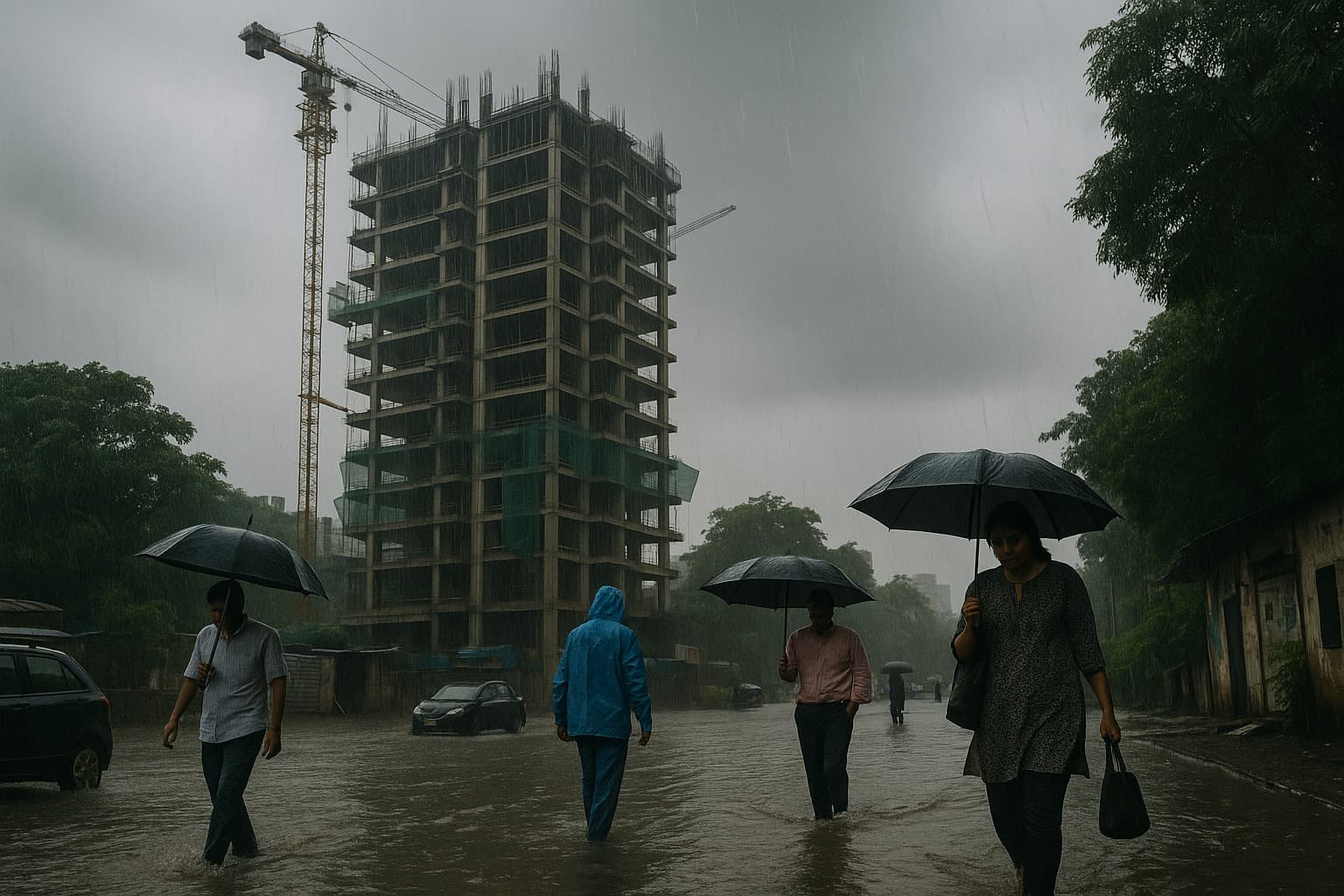How Seasonal Demand Impacts Sales in Indian Real Estate
Summary
Indian real estate sales are heavily influenced by seasonal demand. Festivals like Diwali see booms, while monsoons experience slowdowns. Understanding these cycles helps buyers and developers strategize for optimal results.

When you think of buying a home in India, chances are you don’t just look at prices, locations, or builders—you also think about when to buy. And that “when” isn’t just about bank balance or loan approvals. It’s often tied to something bigger: the seasonal housing demand that shapes the entire real estate sales in India.
If you’ve noticed, homes sell faster during Diwali or Akshaya Tritiya, but not as much during monsoons or the financial year-end. Why is that? Because in India, property buying is more than a transaction—it’s an emotional journey influenced by traditions, family beliefs, and even the weather. Let’s break down how these real estate cycles work and why they matter so much for both buyers and developers.
Why Homebuying in India Feels Seasonal
The Indian property market has its own rhythm. People don’t randomly decide to buy a home; they wait for the right time, the right signs, and yes, the right season. This creates clear property demand trends across the year.
Take festivals, for example. During Diwali or Navratri, families see buying a home as a symbol of prosperity and good fortune. Builders pick up on this sentiment, flooding the market with deals, waived stamp duties, or “book now, pay later” offers. It’s no wonder home buying season during festivals turns into a sales goldmine.
On the flip side, during monsoons, property visits slow down. Who wants to wade through waterlogged streets to check out a new flat? Similarly, March often feels quieter, as people focus on taxes and financial year closures instead of property investments. These ups and downs create the natural real estate cycles we see every year.
The Festive Season Effect – When Sales Boom
If there’s one time when the market lights up, it’s during festivals. The seasonal impact on property sales in India is most visible in these months. From Mumbai to Bengaluru, developers wait all year to launch projects around Diwali, Ganesh Chaturthi, or Christmas.
Why? Because demand shoots up. Buyers feel more confident, banks roll out attractive loan schemes, and families come together to take life-changing decisions. For many, a new home during Diwali feels like starting a new chapter with positivity.
Reports often show that festive quarters record 20–30% higher housing sales trends in Indian metros compared to regular months. This isn’t just marketing hype—it’s genuine buyer sentiment driving real demand. Experts are already predicting a festive season property sales boost in India 2025, and developers are gearing up to ride the wave.
When Sales Slow Down – The Quiet Months
Just like there’s a high, there’s a low. And for Indian real estate, that usually happens during the monsoon, the scorching summer, and the financial year-end.

Monsoon: Heavy rains make site visits inconvenient. Even under-construction projects face delays. This naturally reduces buyer enthusiasm.
Financial Year-End (March): Families are busy with taxes, savings, and budgets. Home purchases are often postponed.
Summer Vacations: Many families are traveling or focusing on school admissions, leading to slower property buying patterns across seasons.
Developers, however, don’t see these as losses. Instead, they use these lean months to push construction, get approvals, or plan the next round of festive launches.
Different Cities, Different Rhythms
The effect of seasonal real estate growth in India isn’t uniform. Each city has its own story:
Mumbai & Pune: Strong festive demand, especially in mid-segment housing.
Bengaluru: A tech-driven city where demand is steady, but festive offers still boost numbers.
Delhi-NCR: Buyers are deal-driven. Festive discounts and freebies work wonders here.
Tier-2 Cities: Places like Lucknow, Jaipur, and Coimbatore are catching up fast, with festive months bringing visible spikes in demand.
These housing sales trends in Indian metros clearly show that while the festive factor works everywhere, its intensity varies.
How Buyers Think During Different Seasons
The beauty of seasonal housing demand lies in psychology. During festivals, buyers feel optimistic—there’s a sense of urgency because they don’t want to miss offers. This often accelerates decision-making.
During quieter months, buyers feel they can negotiate better since developers are hungrier for sales. For some, this becomes the ideal time to strike a deal. This dynamic balance is exactly how seasonal demand influences real estate sales in India—sometimes through emotions, sometimes through strategy.
Developers’ Playbook – Riding the Waves
Builders know these cycles like the back of their hand. Their strategies are fine-tuned to the seasons:
Festive Launches: Big-ticket launches are timed for Diwali or Akshaya Tritiya.
Special Offers: Discounts, free interiors, no EMIs till possession—festive campaigns are hard to resist.
Marketing Blitz: Ads double during festivals, tying emotions with investment.
Off-Season Focus: Construction and internal planning take priority during slow months.
This explains why seasonal impact on property sales in India isn’t random—it’s carefully managed by developers who know when to push and when to prepare.

Should Buyers Wait for the Right Season?
This is the million-dollar question: Should you wait for Diwali, or grab that apartment in summer? The truth is, it depends.
If you’re looking for maximum options, offers, and festive excitement, buy during October–December.
If you want better negotiation power and personalized deals, lean months like April–June can be smarter.
Being aware of seasonal housing trends buyers should know in India helps you play the market to your advantage.
The Bigger Picture – Why It Matters
Ultimately, why festive season drives property demand in Indian market isn’t just about discounts. It reflects how Indians view homes—not just as investments, but as emotional anchors. A new home during Diwali or New Year is seen as auspicious, as a step towards security and prosperity.
At the same time, the impact of seasonal cycles on homebuying in India is now becoming more predictable. Developers plan launches accordingly, banks design loan offers around it, and buyers make decisions in sync.
As the market matures, these patterns will likely get sharper. We’ll see more pronounced festive booms and smarter off-season strategies, making the Indian housing market 2025 forecast even more fascinating.
Conclusion
The story of India’s real estate is incomplete without its seasons. From festive spikes to monsoon slowdowns, the real estate cycles keep the market dynamic and ever-changing.
For buyers, the trick is to align your purchase with your priorities—festivals for positivity and offers, lean months for negotiation. For developers, it’s about leveraging culture, timing, and smart strategies.
At the end of the day, a home is more than numbers and seasons. Whether you buy it during Diwali or in the middle of summer, it’s about creating a space where your life unfolds. And that joy? It’s timeless, beyond any season.
